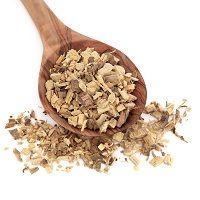Inadvertent Exposure to Licorice Root Extract
When it comes to toxicology, the dose often makes the poison. Consider this report of a case of apparent mineralocorticoid excess apparently caused by licorice root extract.

A case report published in the Autumn 2015 issue of AACE Clinical Case Reports can be summed up in one sentence: the dose makes the poison. In this case the dose was licorice root extract and the source was unknown. Licorice root is known to cause apparent mineralocorticoid excess (AME). Through a series of mechanisms, a compound found in licorice root extract, glycyrrhiznic acid (GZA), increases the concentration of cortisol in the kidneys, which then binds to the mineralocorticoid receptor, which causes symptoms of mineralocorticoid excess.
Two Danish physicians drafted this case report based on an initially puzzling case. A 21-year-old woman with juvenile rheumatoid arthritis arrived for treatment with progressive lower extremity edema, dizziness, headaches, peripheral paraesthesia, muscular fatigue, and exhaustion.
The authors conducted multiple tests to determine the cause of the patient’s symptoms, ruling out obvious causes and considering pituitary causes and drug-induced side effects.
Ultimately, they began to suspect AME, but found no obvious cause within her endocrine system. They asked the patient to examine her diet and determined that licorice root extract was present in two items she consumed daily in large quantities: sugar-free gum and herbal teas. Once she removed these items, her health returned.
Licorice has anti-inflammatory, antimicrobial, and antiviral effects. Some research indicates it is hepatoprotective and has antitumor, antidepressant, estrogen receptor (ER) agonistic, and antioxidative properties. Herbalists employ it to treat peptic ulcer, cough, constipation, wounds, tuberculosis, and diabetes. It is also a component of many vitamins, dietary supplements, and plant protein products.
Licorice is also used as an artificial sweetener, making it a popular additive. It's also used to improve drug taste and/or assist absorption.
This study's authors recommend that when clinicians suspect AME they should look deeper into the patient’s diet. They also warn clinicians and patients to keep in mind that licorice is not always declared on a product’s packaging.